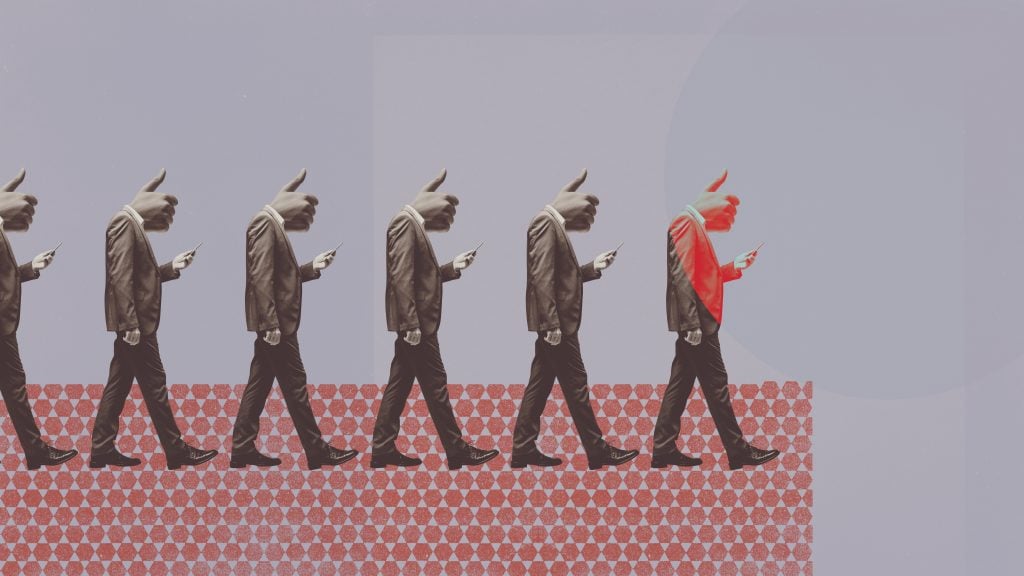
It seems simple: The more technology continues to dominate our lives, the more it should be used to our advantage everywhere — including the workplace. But according to Capital One’s Work Environment Survey, “82% of office professionals believe companies can’t encourage innovation unless their workplace environment is innovative, and 63% feel innovation isn’t reflected at all in their current workplace’s design.”
There are a number of ways to up the ante on your workspace to not only embrace technology but leverage it to spur innovation and drive productivity. As Louis Efron from Forbes put it:
“Technology in an organization today must enable people to be more productive, efficient and innovative; stay connected internally and externally; and feel safe and cared for. It should facilitate the comfortable and expeditious flow of people, ideas and emotions.”
So how exactly do you better integrate technology into the workplace? Here are a few ideas that can really transform an office, as well as improve how employees view their work environment: ![]()
News Tickers and Digital Banners
A great way to pep up an office with something useful is by installing news tickers and/or digital displays. The digital displays can be an integral part of an internal communications strategy — allowing a company to promote events, reinforce values, congratulate employees, disseminate news quickly, or direct people to the intranet.
Reliable Wi-Fi
It may go without saying, but having dependable Wi-Fi is non-negotiable. Check out these tips to keep in mind when setting up a business Wi-Fi network.
Cloud Computing
Many business are opting to ditch the local servers and upgrade to a cloud-based storage system — and for good reason. Not only is cloud computing more secure, it also stores precious file backups, allows for faster recovery of data, provides more flexibility in storage space, and requires no maintenance on your part. And last but certainly not least, it gives employees easy access to files wherever they are — providing the much-needed flexibility workers need these days.
Interactive Displays and Touchscreens
We’re all used to using touchscreens throughout our days — so why not in the office? Interactive displays, boards, or tabletop screens can be a great way to increase employee collaboration and engagement with the company. They can be used in conference rooms for meetings or presentations; in kitchens or break rooms to display things like company performance stats, or to easily manage workflow.
Robust Networks
As the amount of data we use will only continue to increase, it’s a good idea to build a robust, fiber-based, private office network that can handle added capacity in the future.
Wireless Chargers
Wireless charging technology is an easy way to provide convenience throughout the office. While building electrical outlets and USB ports into things like conference tables is still a good idea, wireless chargers add an extra level of convenience. Not only that but having fewer cords helps to upgrade the office aesthetic as well.
Laptops and Tablets
Many companies are opting to provide laptops and tablets — instead of desktops — to employees. And for good reason: They give employees the mobility and freedom they now require. This switch will also impact office design, as you can now choose different workstations that no longer have to accommodate clunky desktops.
Videoconferencing Capabilities
Between the rise of teleworking and the need to communicate effectively with co-workers in other offices, video conferencing is becoming more and more desired. Not only does it greatly increase collaboration, but it reduces travel costs for things like company-wide meetings. Just make sure the service you choose is reliable and easy to use!
Energy-saving Technology
Properly leveraging technology in an office doesn’t just impact employees, it can also help to reduce your carbon footprint — and save money at the same time. Consider things like non-fluorescent, energy-saving light bulbs (in addition to abundant natural light); smart thermostats to monitor energy usage; and Energy Star office equipment.
Smart Standing Desks
If you really want to step into the future and improve employee wellness at the same time, then a smart standing desk might be the way to go. For example, Live OS allows people to set personal preferences for posture and height, as well as work toward activity goals via an app.
Whether you’re upgrading your current office or preparing to build a new space, make sure technology is at the forefront of every decision you make. When in doubt (and when you can), opt for the technology that will make everyone more productive and last well into the future.
See Also:
Creating a Dynamic Workplace Strategy for Your Company

